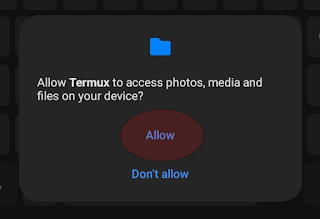How Amazon's Customer Support is unfairly rigged against consumers
When an Amazon purchase goes well, no one notices. Upset and uncertainty is replaced by contentment when minor hiccups are resolved. A five-star rating may be downgraded to four- or three-star if the resolution is not as efficient as one would have expected.
This article describes those instances when things go horribly wrong with Amazon and explains how Amazon is organised so that customers are not able to exercise their right to fair consumer remedies. The information is based on exchanges with Amazon UK customer service, although this will apply to any country that does not prohibit Amazon from this type of behaviour.
Not every negative decision taken by Amazon is wrong, but customers have the right to a decision is based on in a timely manner.
When someone needs to communicate with Amazon, they can do so using a combination of chat, phone, and email.
Chat
Consumers communicating with customer support agents in a chat are not able to download the chat. After the agent shuts down the conversation, the chat content disappears. When I brought up this matter with an agent, he confirmed that they had full control over the chat, and his solution was to "take a screen shot of the chat window after every line".
Customers need to be able to review a chat after the fact. Agents make assertions to customers via chat that cannot be referenced once the agent terminates the exchange.
Emails
Email exchanges with Amazon customer support are done through the email address cs-reply@amazon. In order to maintain a thread within a conversation, Amazon appends a plus symbol and a string after the cs-reply part. For example, one exchange would be cs-reply+A3SC11E84PLJUR@amazon.
The moment an agent wants to disrupt an ongoing exchange, all they have to do is adjust the part after the '+' or remove it completely. The exchange is sabotaged because any agent reading the ensuing replies will not be able to link back to what was discussed earlier. Customers will rarely notice this subtle change because the string in the reply-to portion of the email is not visible.
Customers will start noticing that replies will either ask for the information already provided or agents will start contradicting what was already agreed. This technique deranges the conversation.
Phone calls
Like chat, customers don't have access to phone exchanges. A commitment by an agent cannot be called up when a different customer support agent refutes or contradicts what had been promised.
Agent Training
Agents seem to be trained to overpromise what they can do for a customer. Telling a customer that "your case will be resolved" when that customer has already heard it for the umpteenth time is frustrating.
Agents should be trained to treat customers fairly and truthfully. On many occasions, when agents figure out that they cannot backup their promise, some employ various tactics to pass on the conversation to another agent. I have experienced the agent breaking the communication or asking me to move the conversation to another channel, say from chat to email.It is better when an agent communicates to a customer that they cannot resolve their case. This gives the customer an opportunity to accept the decision or seek a remedy elsewhere. Kicking the case further down the line is an underhanded trick aimed at tiring out the customer.
Clients must be given access to all the content related to them
The customer cannot safeguard their rights unless they have access to the customer support data. All data exchanges must be made available to consumers. Customers must be allowed to download the data. When I requested this information to customer support agents I was told that this was not available.
Metadata and logs must also be made available to customers. These allow customers to gain a better insight into how their case was handled and better understand why certain actions were taken.
Logs, media, and metadata should be retained for at least 180 days from when they were generated or until the case is closed (which comes later).
Call to action: Share on social media and information regulators and consumer groups
Amazon is a global mega-corporation operating from a dominant position. Customers lack the scale and resources to take on Amazon when it behaves as described in this article. Also, many smaller companies copy Amazon and set their customer service to match that of Amazon. Adjusting how Amazon manages customer requests will improve the industry as a whole.
Amazon will only change its behaviour if this failure is brought to its attention. Social media, regulators, and consumer groups will raise awareness and drive the necessary change.
Share this article on social media. Here is a sample you can use:
"Amazon's customer support cheats consumers. Read about their tools and tricks. Amazon must change! https://tinyurl.com/AmazonBadCS #DemandBetterAmazon"
For a sample email and a list of contacts go to Call to Action: Amazon must review its Customer Support Systems




Comments
Post a Comment